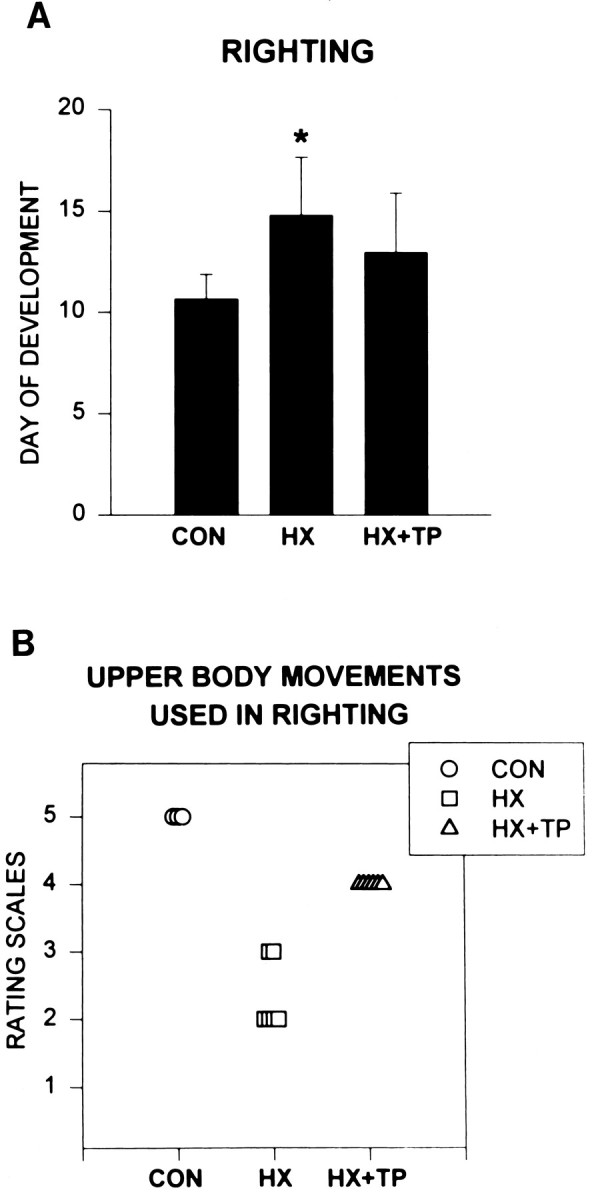Fig. 2.

Effect of neonatal cervical spinal cord injury and transplantation on postnatal development of the righting reflex. A, Histogram comparing average (±SD) postnatal day at which the mature reflex develops in normal uninjured (CON, n = 9), hemisected (HX,n = 6), and hemisected plus transplant (HX+TP, n = 8) rats. The righting reflex matures significantly later in HX rats as compared with CON rats (p < 0.05). HX + TP rats demonstrate a significant improvement compared with HX rats (p < 0.05), because righting develops in a time course similar to that of CON rats. B, Scatter plot of upper body/forelimb use for righting at P11. Eachsymbol represents an individual animal in the specified group. Righting matures in CON rats by the P11, whereas HX and HX + TP rats still exhibit immature behaviors. To initiate turning over, CON rats use upper body rotation in advance of lower body rotation (rating scale = 5). In their attempt to rotate the body, HX rats instead excessively flex their pelvis and engage in other strategies to roll over (rating scales = 2 and 3), representing a different strategy compared with CON and HX + TP rats. HX + TP rats demonstrate emerging abilities to rotate their bodies smoothly from supine to prone but require multiple rotations before achieving the prone position (rating scale = 4). This represents a marked alteration in upper body/forelimb skill development for the righting reflex compared with CON rats.
